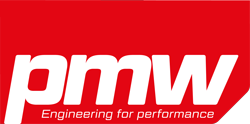In a week when an errant setting triggered one of the biggest upsets in modern Formula 1, Team Porsche has explained the immense level of skill required from its FIA World Endurance Championship (WEC) drivers
With hands and feet, courage, experience and instinct the drivers control the Porsche 919 Hybrid in the FIA World Endurance Championship (WEC). Underneath the feet play heel-and-toe. Some of the Porsche works drivers use their left foot for braking, others prefer to switch with the right one between throttle and brake. But what they do with their hands is a lot more complicated, as the drivers operate a computer. Pointing the car in the right direction is the most trivial task the steering wheel does. The drivers operate 24 buttons and switches on the front as well as six paddles on the reverse side to control the most complex racing car. For the 2016 season, the buttons and switches on the steering wheel were carefully re-positioned in co-operation with the drivers, to facilitate reliable operation at racing pace in Le Mans top speeds are up to 340 km/h. Some control elements had to go on the dashboard because there is simply no more room on the steering wheel.
The wheel isn’t round, but a flat rectangle. The shape is due to the space required during driver changes. Tall drivers such as Mark Webber or Brendon Hartley, in particular, would otherwise have difficulties in accommodating their long legs quickly. There is a large display in the centre, which shows the driver a multitude of information. This includes the speed, what gear is engaged, the currently selected motor management, and the charge status of the lithium ion battery, i.e. how much electrical energy is available to be called up to drive the front axle. The electric motor on the front axle supplements the turbo charged 2-litre, 4-cylinder combustion engine, which drives the rear wheels. The control button at the top left (named DISP) is used to select the displayed information.
The most frequently used buttons are positioned along the top outside edge, so they are easy to reach with the thumb. The blue button at the top right is almost always in use it is the headlight flasher, used by the fast prototypes to warn the slower vehicles in the WEC field before they are lapped. When pushed once, it causes the headlights to flash three times. In daylight, the drivers keep their thumb on it almost permanently, as naturally the headlight signal is more difficult to perceive at that time.
The red button at the top left is also very frequently used. It is used to demand electrical power from the battery, the so-called “boost”. The drivers can boost to pass, but must be clever about rationing the power. The amount of energy per lap is specified. The yardstick is one lap in Le Mans, where eight megajoules are available. The amounts are converted accordingly for shorter circuits. The amount of energy a driver uses, for example, in the middle of a lap to get free of traffic will not be available for the rest of the lap.
The rotary switches left and right below the display (TC/CON and TC R) are for pre-setting the traction control. To fine tune for various engine and hybrid settings, the drivers use the buttons on the top two levels, TF- and TF+ in light yellow, MI- and MI+ in blue. Below them there are the plus and minus buttons in pink to distribute the brake balance (BR) between the front and rear axle.
From the green buttons, the left one operates the radio (RAD) and the one on the right hand side is the OK button for the driver to confirm he performed the setting changes requested from him via the pit radio. A multi directional telemetry is prohibited, the engineers are not allowed to interfere actively, they can just give the drivers information and orders from the data they receive.
The orange buttons on the next level below operate the drink bottle (left, DRINK) and on the right hand side the sailing mode (SAIL), which is a fuel saving driving mode with no acceleration from the combustion engine.
The golden coloured button PIT on the left hand side engages the speed limiter for the pit lane (60 km/h). Its equivalent on the right hand side is labelled FCY and is the speed limiter for neutralisation periods, as when there is a “Full Course Yellow” all cars have to go at 80 km/h.
The centre rotary switch named MULTI corresponds with the two controllers at the very top outside of the steering wheel. When the race engineer, for example, asks for the setting “Alpha 21”, the driver chooses “A” with the rotary switch, then he chooses the 2 by the left hand red controller and finally the single digit 1 by the dark green right controller before pressing the OK button. Programmes for engine management or fuel management are designated by such combinations. The green rotary switch (RECUP) is for the energy recovery management.
In the centre of the lowest level sits the on/off switch for the combustion engine (Start/Kill). The two remaining controllers halfway up the steering wheel define the amount of energy when boosting (B golden and on the left) and offer the strategy choice for the combustion engine (S blue and on the right).
To make the switches easier to recognise in the dark, their colours are fluorescent and respond to a black light lamp, which is situated above the driver’s helmet.
The steering wheel is made of carbon, the grip handles are covered in slip-resistant rubber. Thanks to the power steering system, drivers can steer the car without any difficulty, even with the relatively narrow grips. When reaching through the openings, their fingers touch six paddles on the reverse side of the steering wheel. The centre paddles are used for changing gears pulling the right paddle is for upshifting, and pulling the left paddle is for downshifting. The lowermost paddles operate the clutch, the paddles at the top operate the boost; whether the drivers use this paddles or the boost button described on the front is purely a matter of preference.
The steering wheel can’t become any larger, as it is running out of space to host all operating functions, so for some changes the drivers have to reach over to the dashboard. There they dim the display light at night, tune the windscreen wiper’s speed and the volume of the radio. There is also the “N” button, which puts the gearbox into neutral.


